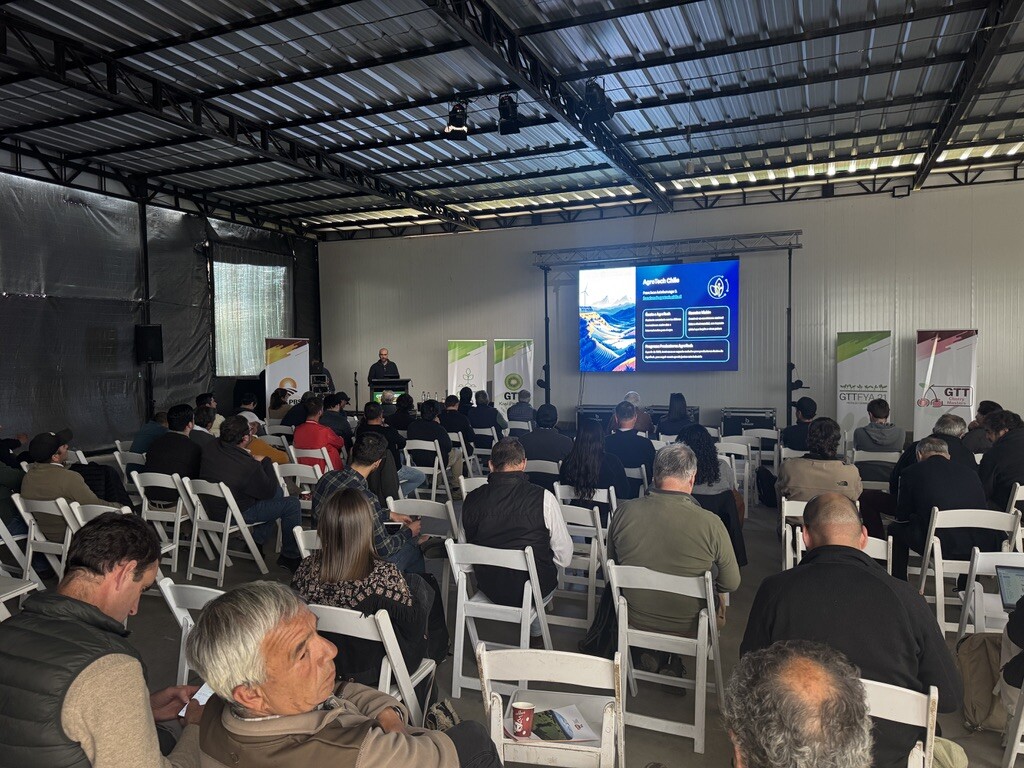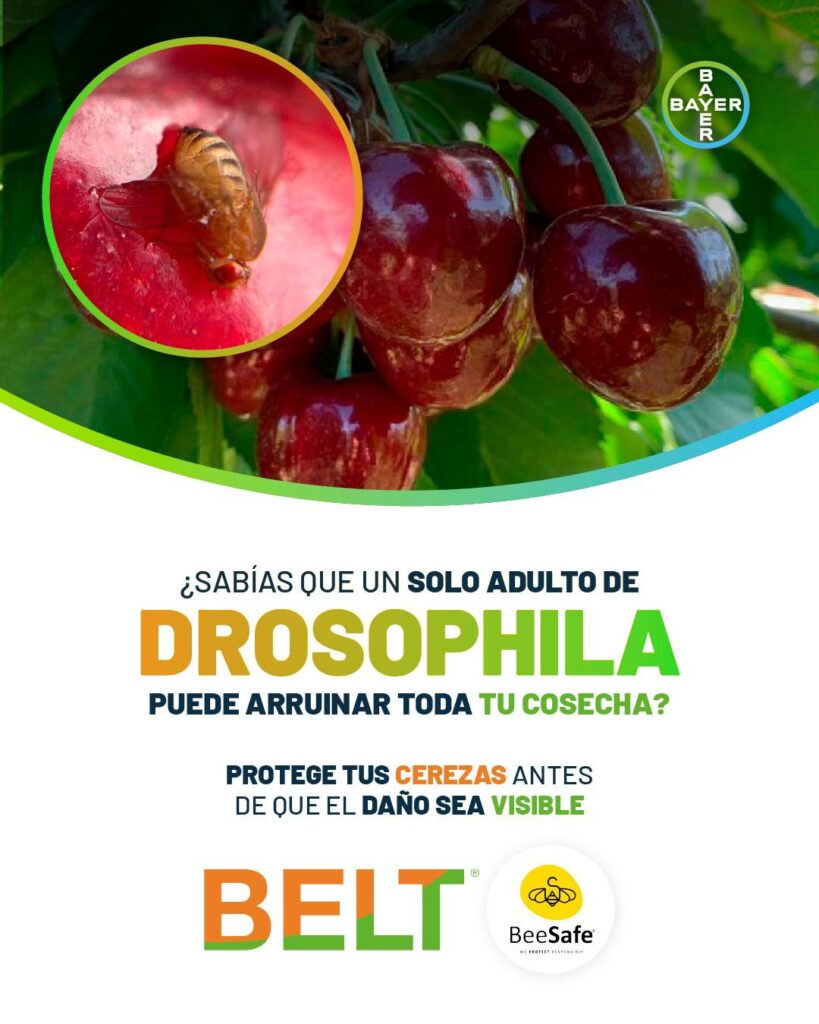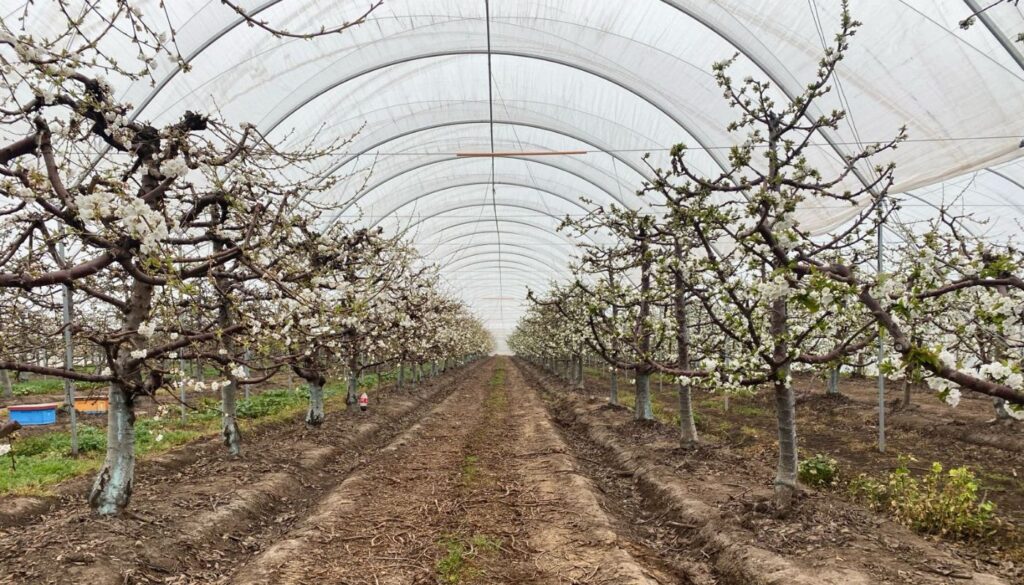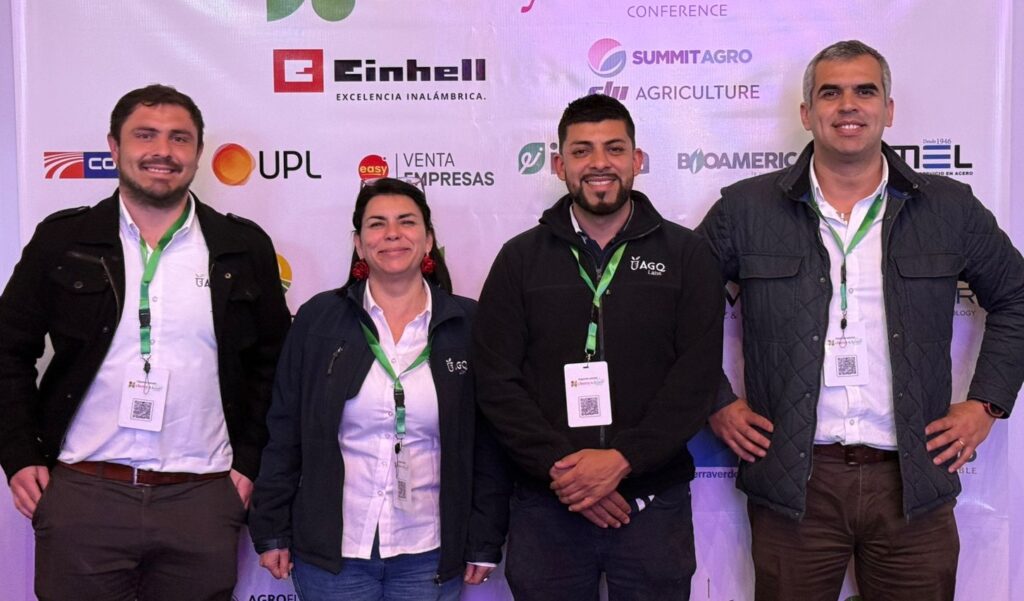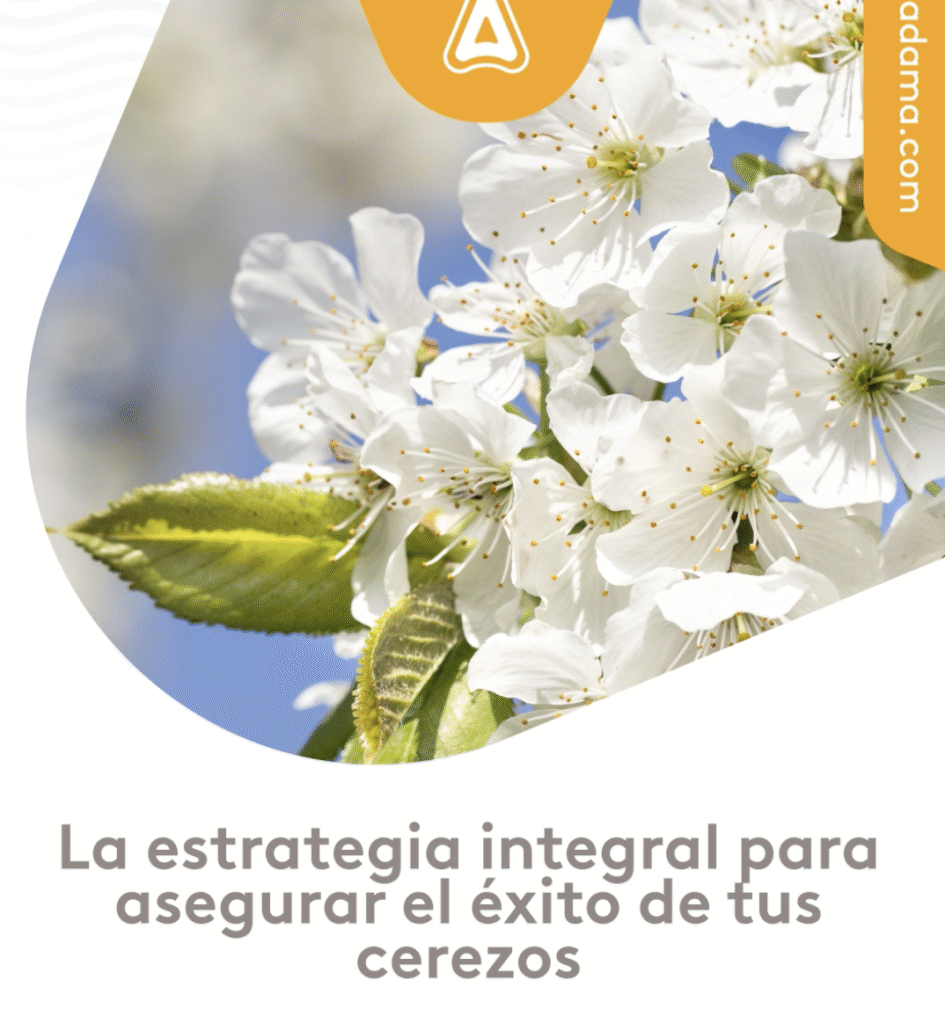Edited, commented and adapted by Carlos José Tapia T. Technical Director of Avium and Content Director of SmartCherry. 2019.
Adapted from: Flower Induction and flower bud development in Apple and Sweetcherry. Nikolaos Koutinas1, Guepo Pepelyankov2, Valentin Lichev2.
1Alexander Technological Education Institute of Thessaloniki, Plant Production Department, Thessaloniki, Greece. 2Agricultural University, Plovdiv, Bulgaria. Published in Biotechnol & Biotechnol. Eq. 2010, 24 (1), 1549-1558.

Summary.
As a result of studies conducted in the last 20-30 years, new information has been obtained on flower bud formation in some fruit species, especially in cherry and apple, including some data on the presence of genes determining the reproductive organs. Some problems concerning floral induction, histological transformation of the apical meristem, morphological differentiation of flower buds, factors and conditions influencing flower bud formation and the quality of reproductive organs will be discussed in this research. Some attention has been paid to the process of pruning, summer pruning in particular, the use of growth regulators, by which processes of flower bud formation can be regulated.
Keywords: Cherry trees, apple trees, floral induction, histological transformation, morphological differentiation, agricultural practices.
1.Introduction.
Still, many of the most important characteristics of flower bud formation remain insufficiently elucidated by theoretical biology and applied horticulture (Buban, 1996). Particular attention deserves the clarification of the morphogenetic changes that occur between the vegetative state of the buds and the initiation of the flower organs (Foster, 1997). et.al.,2003).
The dormant period allows buds to complete their development cycle in two successive calendar years. This provides an opportunity to reduce competition for nutrients between floral and vegetative development, thus presenting a great advantage for the fruits of fruit trees, especially cherry trees.
According to Zimmerman (1972), the length of the juvenile period, characteristic of plants propagated by seed, is genetically controlled. The time of appearance of the first flowers is determined by genotypes and can be accelerated by applying different methods. The most effective method seems to be the stimulation of vegetative growth, so that the new plants can reach a large size as soon as possible. The beginning of the formation of flower buds in new apple and cherry plants can be accelerated by means of less vigorous rootstocks.
The transition from the juvenile phase to the mature phase may be due to several mechanisms, including hormonal control over the distribution of absorption in the apical meristem zone (Hacket, 1976).
To reduce the length of a non-productive period in young trees, dwarfing or semi-dwarfing rootstocks are used and are now widely applied. However, growth weakening is not always desirable, particularly in the first and second year after planting (Costes et.al., 2004).
The formation of flower buds in mature trees is fundamentally determined by the presence of hormones (Buban, 1996). The lack of initiation of flower buds in crops with “annualism” has been directly related in the past to the effect of depletion of the accumulation of reserves in trees from one season to another, especially in cherry trees, and by a hormonal effect in other species such as apple trees, attributed to the action of hormones and particularly to gibberellins produced in young fruit trees in the so-called “year” (Luckwill and Silva, 1979).
2. Flower bud formation sites.
Most apple and cherry cultivars produce fruit primarily on spurs (Forshey and Efving, 1989). In general, it is during this period of preliminary induction of flower bud formation that spurs are produced, and especially in cherry trees, also on the basis of the current year's twigs (Buban and Faust, 1982). The leaves on the spurs may constitute more than 60% of the total leaf area of the tree.
In both cases, the flower buds are single flower buds (not mixed), however, in the case of "darts" they are always composed of at least one vegetative bud, which gives renewal to this fruit point, not in the case of one-year-old branches that once they flower or bear fruit, this point becomes "blind".
2.1 Development of flower buds.
Flower bud formation is a complex phenomenon. Considering that flower bud formation genes are a basic factor in their occurrence, and gamete formation at the time of meiosis as the final event. Wellensiek (1977) formulated that the initial reasons for flower bud formation can be defined as “something that happens between flower formation genes and meiosis”. This statement is still valid (Buban, 1996). For flower initiation it is necessary to stop the retention of the genes responsible for flower bud formation and in that sense the induction of flower bud formation may mean something similar to unblock the process.
The identification and characterization of a number of genes connected with flower bud formations in some model angiosperm species such as Antirrhinum majus L and Arabidopsis thaliana (L) Heynh., has allowed, over the last ten years, to search for its homology in fruit species.
The formation of flower buds occurs in the following sequence: induction of flower bud formation, histological transformation and morphological differentiation (Buban and Faust, 1982).
2.2 Induction of flower buds.
According to Dolega et al., 1997, induction provides a sufficiently developed and “susceptible” impulse to the transition from vegetative buds to the generative or floral phase, but it is still not clear what the fundamental reasons for induction are (Buban, 1996, Link 1992). It could be said that it is a qualitative change, the final result can be programmed by strategically arranged parts from the meristem to the formation of flowers (Buban and Faust, 1982). Induction can also be seen as a process where previously information is repressed that is being transformed to form a new structure, that is, the floral bud. In the case of apple trees, the genes of the AFL (Apple Floricaula Leafy) type are supposed to be included in induction (Kotoda, 1997). et. al., 2000). According to Luckwill (1974) induction is connected with changes in the hormonal balance, and according to Sachs (1977) with changes in the distribution of absorption from the apical meristem. Link (1992) shares the view that the induction of flower buds, as well as the set of fruits and the fall of fruits or primordia of different plant organs, depend on the interaction in space and time of their own growth-promoting or growth-retaining substances. Even in apple trees, it is possible to use GA spraying.3 within the supposed induction time and thus counteract the effect of flower bud formation (Li et.al., 1994).
2.3 Histological Transformation.
When the still vegetative bud appendage receives the signal to differentiate into a floral bud (approximately 70 days after full bloom in 1-day cherry trees), a sequence of events takes place. Mitotic activity becomes complete for the entire apex of the histological structure. The central meristem is more expanded but without morphological changes in the appendage, the histological transformation is carried out, and from the moment of initiation of flowering it is irreversible. This already begins at approximately 90 days after full bloom, half the time of the flower induction stage.
2.4 Morphological differentiation.
The appearance of the flower primordia in cherry trees, within the same bud, is almost simultaneous (Zeller, 1955). Certain differences in the initial development phases of flowers in a bud can be observed up to the initiation of anthers and carpels; after that, all flowers look similar (Díaz, 1958). et.al.,1981).
With the onset of morphological differentiation of buds in January (for the southern hemisphere) and the subsequent formation of flower parts, the transition of the plants into a state of winter dormancy occurs (Kolomietz, 1976). Towards the end of autumn all flower primordia, except for the sepals, are in an undifferentiated state. The carpels usually form seed cases, but are not yet present in the form of a pistil.
The rate of flower bud development during different phases is not constant, particularly under unfavourable weather conditions (Huang, 1996). Development may be delayed for a certain period of time. Consequently, it is difficult to establish how long a given phase lasts.
3. Factors and conditions for flower bud formation.
The development of flower buds, from induction to anthesis (full flower), is subject to the influence of different factors and conditions, which at a certain time are responsible for the formation of flower buds.
3.1 Crops and cultivars.
The onset of histological (Buban, 1967) and morphological (Bulatovic, 1978, Zeller, 1954) development may depend on the characteristics of the cultivars. Cultivars and cultivars may also have an influence on the further development of flower buds (Mihailov and Topchiiski, 1975).
3.2 Rootstocks.
Rootstocks, as components of grafted fruit trees, can influence the timing of flower bud initiation. According to Elek (1974) some cherry rootstocks exert this influence only in specific cultivars. Apparently an interaction between the two components of a tree takes place, leading to a change in the timing of the beginning of morphological differentiation. In some studies the observed differences between rootstocks were not significant. Some authors found that rootstocks do not influence the final timing of shoot growth, even though their length depends on the vigor of the rootstock. They also do not influence the “critical number” of appendages in the transition of buds from vegetative to reproductive state or the timing of flower initiation. The “critical number” of appendages was around 20 years of studies, regardless of differences in climatic conditions. However, the proportion of shoots with initiated flower buds increases under the influence of less vigorous rootstocks. Rootstocks showing different vigor do not significantly influence the initiation of flower bud development in cherry cultivation (Kuhn and Callensen, 2001).
3.3 Fruit branches.
Differences in the timing of flower bud initiation of different fruiting branches have been commonly noted. Bud differentiation usually starts early in the spurs, somewhat late in the younger and more vigorous ones, and later in the shoots (Abdulkadyrov et.al.,1972, Kolomietz, 1976).
Sometimes the onset of flower formation on branches of identical position (of the same age) can occur suddenly and almost simultaneously in all of them (Luckwill and Silva, 1979), and in other cases within a much longer time (Keremidarska, 1968, McArtney and Li, 1998), which means that the position of the branches, whether vertical or horizontal, in the plants would not influence the process of flower induction and differentiation.
3.4 Shoot growth.
Flower bud differentiation is often associated with shoot growth. Determination or arrest of growth is considered a prerequisite for flower initiation (Abdulkadyrov et.al.,1972, Hirst and Ferree, 1995).
Vegetative growth and flower bud formation are considered antagonistic processes (Davis, 1957, Tromp, 1976). That is, once vegetative growth has stopped during the season (approximately 70 DDPF), the flower induction process begins.
3.5 Detrimental influence of fruit.
The detrimental influence of fruit on flower bud formation is a common phenomenon in fruit tree species such as apple, and it has been studied that it is mainly due to the high hormonal load (especially gibberellins) that is responsible for intervening against flower induction. This is explained by the fact that the flower induction process coincides in time with the development of the fruit and the maturation of the seed (Davis, 1957, Monselise and Goldshmidt, 1982).
However, in cherry trees, the influence of the load is not linked to a hormonal factor that affects less induction, but to a high potential that generates wear in the plants, shaking up the reserve system for the following season. This has repercussions on a low response to the productive potential. The latter is also affected by other factors.
3.6 Hormones.
Five clearly defined types of plant hormones (gibberellins, auxins, cytokinins, ethylene and growth inhibitors) have been recognized. Each of them performs numerous functions, which act simultaneously to regulate the behavior of the fruit plant (Luckwill, 1980). In studies related to flower bud formation, special attention has been paid to gibberellins, which have been determined to be the fundamental factor in the lack of flower bud formation in apples and pears (Luckwill, 1974, Luckwill, 1980). They act against flower bud formation in order to overcome the alternating delay also observed in the application of exogenous gibberellins.
In summary, the views of different authors on the way endogenous auxins and gibberellins act on flower bud formation indicate that auxins have an indirect, but favourable effect on flower bud initiation early in the growing season. Auxins located in seeds attract more nutrients to the buds. This is important, early in the season for a rapid development of leaf primordia and young leaves in the season, which is a prerequisite for flower bud initiation. Gibberellins, translocated from seeds, would counteract the favourable effect of auxin and decrease flower bud formation. By means of enhancing shoot growth, they indirectly decrease flower bud formation.
3.7 Ecological conditions.
Flower bud initiation and development can be influenced by ecological conditions. High temperatures can indirectly inhibit bud formation in some fruit crops, and diurnal and nocturnal temperature variations in amplitude also have a depressive influence on flower bud formation (Abbott et.al.,1974). Frosty weather before the onset of morphological differentiation, as observed in some years, may drive the decline in its onset (Abbott,1977, Mihailov, 1988). Heat accumulation between full flower and the beginning of floral initiation, however, is not accounted for by seasonal variations in onset (McArtney, 1988). et.alFavorable climatic conditions for photosynthesis with a long period after harvest, even in late crops, in countries such as New Zealand, can lead to the formation of “more vigorous flowers” and this is a favorable effect on crop productivity (Ferree et.al., 2001).
Under subtropical climate conditions, where low temperatures are necessary to satisfy the cold requirements, but are insufficient, part of the flower buds, which began their development in some fruit species, are transformed into vegetative ones.
4. Quality of reproductive organs.
The quality of the blossom in cherry trees can be connected with the flowering time, and these periods depend on the different positions of the flowers on the fruit wood (Patten et.al., 1986).
Thus, late flowering within the same plant could mean a lower fresh weight of flowers, pistils, ovaries, fruits and soluble solids in the fruit content. Flower buds arranged in spurs generally have a later flowering than those buds arranged at the base of one-year-old branches.
Double fruit formation is the result of two pistils forming at the time of flower bud differentiation in the previous year (January in the southern hemisphere), and is a major problem in some regions with warmer summers (Micke et.al.,1983). A critical factor in the formation of flowers with double pistils in cherry crops is the daily air temperature above 30°C (Beppu and Kataoka, 1999). Buds are most sensitive to high temperatures when they are in a transition phase from sepal differentiation to petal differentiation (Beppu et.al., 2001). It is possible, by means of artificial shading, particularly during unusually hot summers, in order to lower the air temperature, to reduce the formation of double pistils (Beppu and Kataoka, 2000). Forcing cherry trees to accelerate ripening can reduce double pistil formation by accelerating the date of bud differentiation and avoiding their exposure to high temperatures when they are still sensitive to them (Beppu and Kataoka, 2000). et.al., 2001). The quality of flower buds and flowers in cherry trees determine their sensitivity to frost in late winter and early spring (Kuhn and Callesen, 2001).
5.Practical considerations.
5.1 Pruning.
Pruning during dormancy and its influence on the growth and fruiting of fruit trees have been the subject of numerous studies (Forshey and Efving, 1989, Mika, 1986). Studies on summer pruning are more limited.
Summer pruning, applied to young and vigorous trees, can be favorable for the formation of flower buds (Miller, 1982). It is desirable for this type of pruning to be applied in the first half of summer (Lord et.al., 1979) to have a real impact on bud formation.
However, in some cases summer pruning has no positive influence on flower bud initiation (Greene and Lord, 1983) and its effect depends on the characteristics of the crops (Webster and Shepherd, 1984). Summer pruning may reduce the number of flower buds per tree, but may increase the number of flowers per inflorescence, so the total number of flowers per tree may not change in the end (Myers and Ferree, 1983). All of the above is related to the light level of the plants at the time of pruning. Undoubtedly, vigorous plantations with a low light level are always preferred in summer pruning.
As regards dormant pruning, the trimming of one-year-old branches can be used in crops with a horizontal growth habit once flower buds have started on one-year-old branches, without a negative effect on the formation of flower buds, but not allowing the development and formation of shoots a year later in this type of wood.
In cherry, the budding of the current season's shoots up to 40-50 days after full flower increases the number of flower buds at the bases, accelerates floral initiation and favors the formation of larger flower buds at the end of March in the southern hemisphere (Guimond et.al., 1998a, Guimond et.al.,1998b). The authors recommend summer pruning for densely planted young trees at high densities, reporting that tilting of spreading shoots in the third year after planting increases the number of flower buds on the basic shoots; however, the total number of flower buds per tree may decrease (Webster and Shepherd, 1984). This is based on the tasks of branch orthopedics widely used in the training stage.
5.2 Use of fertilizers.
Fertilization in fruit trees is a treatment that can significantly affect the formation of flower buds and the fruit set. It should be carried out according to the nutritional condition of the soil, characteristics of the cultivars, rootstocks, climatic conditions, fruit load and desired fruit quality (Jonkers, 1979). The application of high doses of phosphorus in tree plantations can increase the number of flower bud initiation, only if necessary depending on the soil condition (Neilsen et. at., 1990, Williams and Thompson, 1979). It is assumed that phosphorus indirectly influences the formation of flower buds by changing the level of cytokinins synthesized in the roots (Hirst and Ferree, 1995c).
Nitrogen fertilization after the end of extension root growth may stimulate flower bud formation (William and Renninson, 1963). Early application of N stimulates growth and this is undesirable for flower bud formation potential. Summer nitrogen fertilization, in addition to spring application, increases ovule and stigma vitality in some cultivars (William, 1965). However, in situations of “yearlingism”, nitrogen fertilization in spring should be limited, while fertilization in autumn, as well as in the following spring, in the year should be abundant (Werth, 1976).
5.3 Irrigation.
The influence of an optimal irrigation schedule is favourable for the formation of flower buds in fruit trees (Keremidarska, 1968). Particular attention is deserved by fertigation, which has been recently applied in intensive orchards. With the optimal supply of water and nutrients by means of fertigation, more flower buds are initiated in young trees, independent of the acceleration of growth (Dencker and Hansen, 1990, Dencker and Hansen, 1994a, Dencker and Hansen, 1994b). Competition between growth and fruiting can be aggravated as a result of an unbalanced influence by a rootstock, irrigation or other factors. The situation can be changed, however, when growth is stimulated by simultaneous supplies of water and nutrients, it may affect the metabolism in a more balanced way, possibly avoiding the lack of specific metabolites important for flower initiation at critical stages. Through fertigation, root activity, shoot growth and development, and basal bud formation could be improved to a degree where a large part of these buds become flower buds.
5.4 Pollination.
In cherry, special attention must be paid to providing adequate pollination at the appropriate time, taking into consideration the short vitality of the ovules and the embryo sac (Stosser and Anvari, 1983).
5.5 Growth regulators.
Some of the changes that occur in the process of flower bud formation in fruit trees as a result of the application of growth regulators were discussed in detail by Mitov et al. (1977). There, some points of view, expressed in the last three decades, were presented. The changes are mainly oriented in two directions: induction of the formation of floral stems by suppression of growth by means of treatment with retardants (substances that suppress growth) (Hansen and Grauslund, 1980, Luckwill, 1974, Luckwill, 1980) or cytokinins (Ramirez, 1981). et.al., (2000) and the inhibition of flower bud formation by applications of gibberellic acid (Hansen and Grauslund, 1980, McLaughlin and Greene, 1991b, Werth, 1976). According to Luckwill and Silva (1979) treatments with retardants can weaken the competitive vigor of annual shoots, resulting in an increase in flower bud initiation. In the case of gibberellic acid an opposite mechanism can be expected. Sometimes retardants reduce shoot extension growth without influencing flower initiation (Greene and Lord, 1983). Treatments with retardants Paclobutrazol The number of flower buds usually increases, but some of the leaves may fall off earlier, resulting in a decrease in the number of fruits and yield (Bargioni). et.al.1986).
It is assumed that spraying with gibberellic acid GA3, It blocks the first step in the process of flower bud formation before shoot growth has stopped (Tromp, 1972). This growth regulator can suppress flower bud formation without influencing growth (Hansen and Grauslund, 1980). The various effects obtained with growth regulators in different studies indicate that special care is necessary in their application. Growth regulators should be used as an additional measure to traditional agricultural practices. Their restrictive application is also necessary in connection with the preservation of the natural environment.
6.Conclusions.
Flower bud formation in fruit trees in temperate climate zones, including apples and cherries, is a complex biological phenomenon, which has been the subject of many studies, lately including explanations of its genetic essence. However, some of the most characteristic moments of the transition from vegetative bud to reproductive state and its further development are still not sufficiently clarified. The existence of alleged versatile relationships between genetic control, hormonal balance and the presence of sufficient amount of assimilates in the plant as a whole and more precisely in the formation of flower buds. The development of flower buds is related to the characteristics of the fruit species and its cultivation, ecological conditions and agricultural practices. The quality of reproductive organs depends on factors and conditions for the formation of flower buds, which in turn influence the quantity and quality of fruit production.
The initiation and development of flower buds in apple and cherry can be successfully regulated by scientifically sound agro-technical practices such as pruning, fertilization, irrigation and treatment with growth regulators.

Bibliographic References
- Abbott DL (1977) Rep. Long Ash. Res. Station for 1976, 167-176.
- Abbott DL, Bull V., Bishop SN (1974) Rep. Long Ash. Res. Station for 1973, 31-33.
- Abdulkadyrov SK, Batyrkhnov Sh. G., Dzhabaev BR (1972) Trudy Dagestanskogo Sel´skokhozyaistvennogo Instituta 22, 58-71. (in Russian) (Hort. Abstr.,43, 4999).
- Bargioni G., Madinelli C., Ramina A., Tonutti P. (1986) Acta Horticulturae, 179(2), 581-582.
- Beppu K., Ikeda T., Kataoka I. (2001) Scient Horticulturae, 87(1-2), 77-84.
- Beppu K. and Kataoka I. (1999) Scient Horticulturae, 81(2), 125-134.
- Beppu K. and Kataoka I. (2000) Scient Horticulturae, 83(3-4), 241-247.
- Buban T. (1967) Arch. Gartenbau, 15, 129-148.
- Buban T. (1996) In: Floral biology of temperature zone fruits three and small fruits (J.Nieki, M. Soltesz, Eds.) Akademiai Kiado, Budapest, 3-54.
- Buban T. and Faust M. (1982) Hort. Revewes, 4, 174-203.
- Bulatovic M. (1978) Archiv za Poljoprivredne Nauke, 114, 159-164.
- Costes E., Belouin A., Brouard L., Lelezec M., (2004) J.Hort. Sci. Biot., 79(1), 67-74.
- Davis LH. (1957) Proc. Am. Soc.Hortic. Sci., 70, 545-556.
- Dencker I. and Hansen P. (1990) Garden Construction Sciences, 55(4), 145-148.
- Dencker I. and Hansen P. (1994a) Gartenbauwissenschaft, 59(4), 145-149.
- Dencker I. and Hansen P. (1994b) J. Hort. Sci., 69, 869-876.
- Diaz DH, Rasmussen HP, Dennis FGJr. (1981) J. Amer. Soc. Hort. Sci., 106(4), 513-515.
- Dolega E., Bertschinger L., Fankhauser F., Stadler W. (1997) Obst-Weinbau, 133(25), 633-635.
- Elek E., (1974) Kerteszeti Egyetem Kozlemeyei, 38(6), 161-174.
- Ferree DC, Bishop BL, Schupp JK, Tustin DS, Cashmore WM (2001) J. Hort. Sci.,76(1),1-8.
- Forshey CG and Efving DC (1989) Horticultural Reviews, 11, 229-287.
- Foster T., Jonston R., Seleznyova E. (2003) Ann Botany, 92,199-206.
- Greene DW and Lord WJ (1983) J. Amer. Soc. Hort. Sci., 108(4), 590-595.
- Guimond PK, Andrews PK, Lang GA (1998a) J. Amer. Soc. Hort. Sci, 123(4), 509-512.
- Guimond PK, Andrews PK, Lang GA (1998b) HortScience, 33(4), 647-649.
- Hackett WP (1976) Acta Horticulturae, 56, 143-154.
- Hansen P. and Grauslund Og.J., (1980) Tidskr. Planteavl, 84(3), 215-227.
- Hirst PM and Ferree DC (1995a) J. Amer. Soc. Hort. Sci., 120(4), 622-634.
- Hirst PM and Ferree DC (1995c) J. Amer. Soc. Hort. Sci., 120(6), 1018-1024.
- Huang H. (1996) Journal of Fruit and Ornamental Plant Research, 4(3), 95-107.
- Jonkers H. (1979) Scientia Hortícolae, 11, 303-317.
- Keremidarska S. (1968) Gradinar. Lozar. Nauka, 5(3), 3-17. (in Bulgarian).
- Kolomietz IA (1976) Surmounting of periodicity of bearing in the apple, kyiv, Urozaj, 17-50. (in Russian).
- Kotoda N., Wada M., Komori S., Kidou S., Abe K., Masuda T., Soejima J. (2000) J. Am. Soc. Hort. Sci., 125, 398-403.
- Kuhn BF and Callensen O. (2001). Gartenbauwissenschaft, 66(1), 39-45.
- Li Sh., Meng Sh., Li T., Lin H., Tu Y. (1994) Advances in Horticulture, 338-341. (in Chinese).
- Link H. (1992) In: Die Blute (F. Winter et.al., Eds). Lucas Anleitung zum Obstbau, Verlag Eugen Ulmer, Stuttgart, 26-30.
- Lord WJ, Greene DW, Damon R. Jr. (1979) J. Amer. Soc. Hort. Sci.,104, 540-544.
- Luckwill LC (1974) Proc. 19th Intern. Hort. Congr., Warsaw, 3, 237-245.
- Luckwill LC (1980) Scientific Horticulture, 31, 60-68.
- Luckwill LC and Silva JM (1979) J.Hort Sci.,54(3), 217-223.
- McArtney SJ and Li SH, (1998) HortScience, 33, 699-700.
- McArtney SJ, Hoover EM, Hirst PM, Brooking IR (2001) J.Hort Sci. and Biotechn., 76(5), 536-540.
- McLaughlin JM and Greene DW (1991b) J. Amer. Soc. Hort. Sci., 116(3), 450-453.
- Mihailov Ts. (1988) Rasteniev. Nauki, 25(1), 85-91 (in Bulgarian)
- Mihailov Ts. and Topchiiski YEAH., (1975) Gradinar. Lozar. Nauka, 12(5), 13-20 (in Bulgarian).
- Mika TO. (1986) Hort Reviews, 8, 337-378.
- Micke W., Doyle JE, Yeager JT (1983) California Agriculture, 37(3/4) 24-25.
- Miller SS (1982) J. Amer. Soc. Hort. Sci.,107(6), 975-978.
- Mitov P., Pepelyankov G., Diakov D. (1977) Center nautch-techn. Ikonom., Minist. Zemed. Hranit. Prom., Sofia, 15-24. (in Bulgarian).
- Monselise SP and Goldshmidt EE (1982) Hort. Reviews, 4, 142-173.
- Myers SC and Ferree DC (1983) J. Amer. Soc. Hort. Sci.,108(4), 634-638.
- Neilsen GH, Hogue EJ, Parchomchuk P. (2000) HortScience, 25(10), 1247-1250.
- Patten KD, Patterson ME, Proebsting EX (1986) J. Amer. Soc. Hort. Sci., 111(3), 356-360.
- Ramirez H., Bodson M., Verhoyen MNJ (2000) Acta Horticulturae, 514, 245-248.
- Sachs RM (1977) HortScience, 12(3), 220-222.
- Stosser R. and Anvari SF (1983) Acta Horticulturae, 139, 13-22.
- Tromp J. (1972) J. Hort. Sci., 47, 525-533.
- Tromp J. (1976) Scientia Hortícolae, 5, 331-338.
- Wellensiek SJ (1977) Acta Horticulturae, 68, 17-27.
- Webster AD and Shepherd UM (1984) J.Hort. Sci. 59(2), 175-182.
- Werth K (1976) Construction and Weinbuilding, 13, 48-51.
- William RR (1965) J.Hort Sci., 40, 31-41.
- William RR and Thompson AH (1979) HortScience, 14(6), 703-704.
- William RR and Renninson RW (1963) Horticulturae, 9, 34-38.
- Zeller O. (1954) Angew. Botany, 28, 178-191.
- Zeller O. (1955) Angew. Botany, 29, 69-89.
- Zimmerman RH (1972) Hort. Science, 7(5), 447-455.


